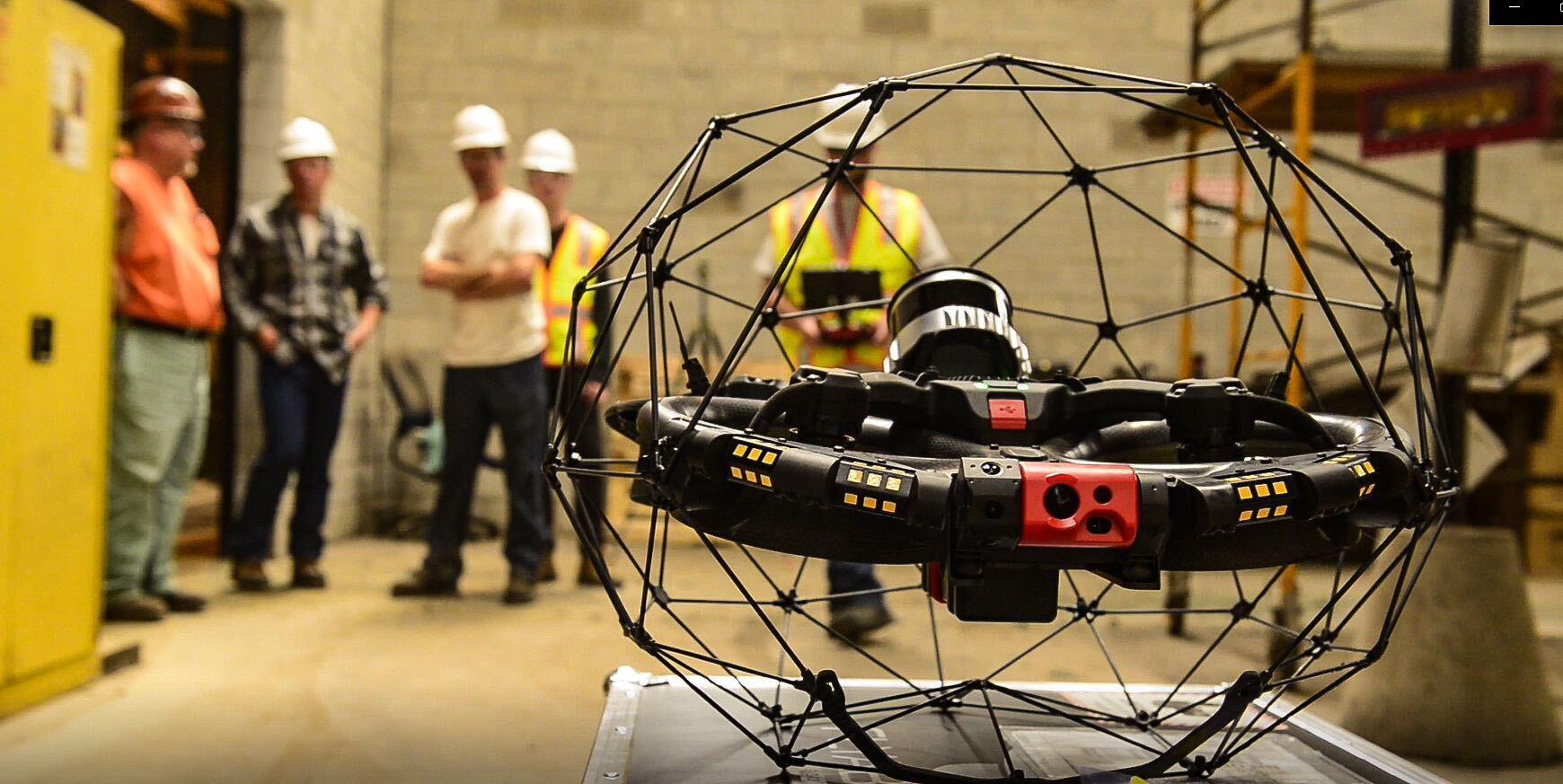Indoor Drones: 4 Benefits For The Oil & Gas Industry

Using drones to survey external structures is something that many inspection managers take full advantage of. The oil & gas industry utilise the technology for various reasons, including leak detection and asset inspection.
However, indoor drone use hasn’t, until recently, been so widely used – mainly because of the challenges surrounding reliable, easy-to-use and effective aerial vehicle technology. The majority of operations still rely on traditional inspection methods – many of which require extended asset shutdown, trained inspectors, high costs and the associated risk to human life.
Enter the Elios 3 – Flyability’s revolutionary caged drone that is finally bringing effective unmanned aerial vehicle surveillance to mainstream non-destructive testing (NDT) use.
Removing the Barriers from Confined Space Drone Inspection
Less of a drone and more of a flying data collection vehicle, the Elios 3 provides inspectors with the ability to harvest multiple data streams in a single, simple-to-navigate flight.
The drone uses LiDAR mapping, high-definition cameras, lighting, video and other sensors to return multiple data streams and create accurate 3D visuals. It also dramatically reduces the inspection time. Moreover, the cage surrounding the drone is integral to its makeup. It’s also extremely simple to operate, requiring minimal training to use – something that that can easily be learned via the Nexxis training centre, Lab61. Thanks to cutting-edge software, the gathered data is returned in real-time through easy-to-understand reports and 3D model choices.
The benefits of using a drone like the Elios 3 to carry out internal inspections can be summed up as follows:
- Enhanced safety: assets within the oil and gas industry typically represent hazardous environments. The oil and gas industry often involves working in hazardous environments, including confined spaces, non-oxygen atmospheres, and at heights. Human inspectors need to be highly trained and there is always an associated risk with such tasks. Removing humans from the equation dramatically increases how safe the inspections are to perform
- Improved data: However diligent and experienced an inspector might be, human error will always factor into the returned results, however, the Elios 3 will capture a larger amount of high quality data in less time. In addition, this reliable information is processed in real-time, streamlining the complete process. In turn, this allows inspectors to not only prioritise maintenance tasks, but also dramatically improves monitoring of asset wear over time. This is thanks to pinpoint geolocation, allowing for the return of the drone back to the exact spot for future inspections
- Reduced downtime: Removing pre- and post-inspection tasks that are necessary for manual inspections can reduce timescales from weeks to mere hours. The Elios 3 can be flown straight into an asset without the need to erect scaffolding or make the area safe for rope entry
- Cost savings: All of the above lead to a significant reduction in the cost of mandatory inspections. Better data, faster inspection times, the removal of costly preparation and much-reduced downtime dramatically impacts the cost of surveillance and inspections. In addition, these advantages allow for a far more proactive inspection approach. The better the inspection processes, the less likely an operation is to suffer unexpected asset failure. It also prevents unnecessary maintenance and helps maintenance managers more accurately determine the mean time before failure (MTBF)
Some examples of where the Elios 3 is successfully being used for advanced inspections include:
- Drilling ships
- Offshore regs
- Storage tanks
- Refineries
- Floating production storage and offloading (FPSO) Jetties
Contact us to organise a demonstration of how the Elios 3 could streamline your asset testing and inspection requirements, or request a quote online.
